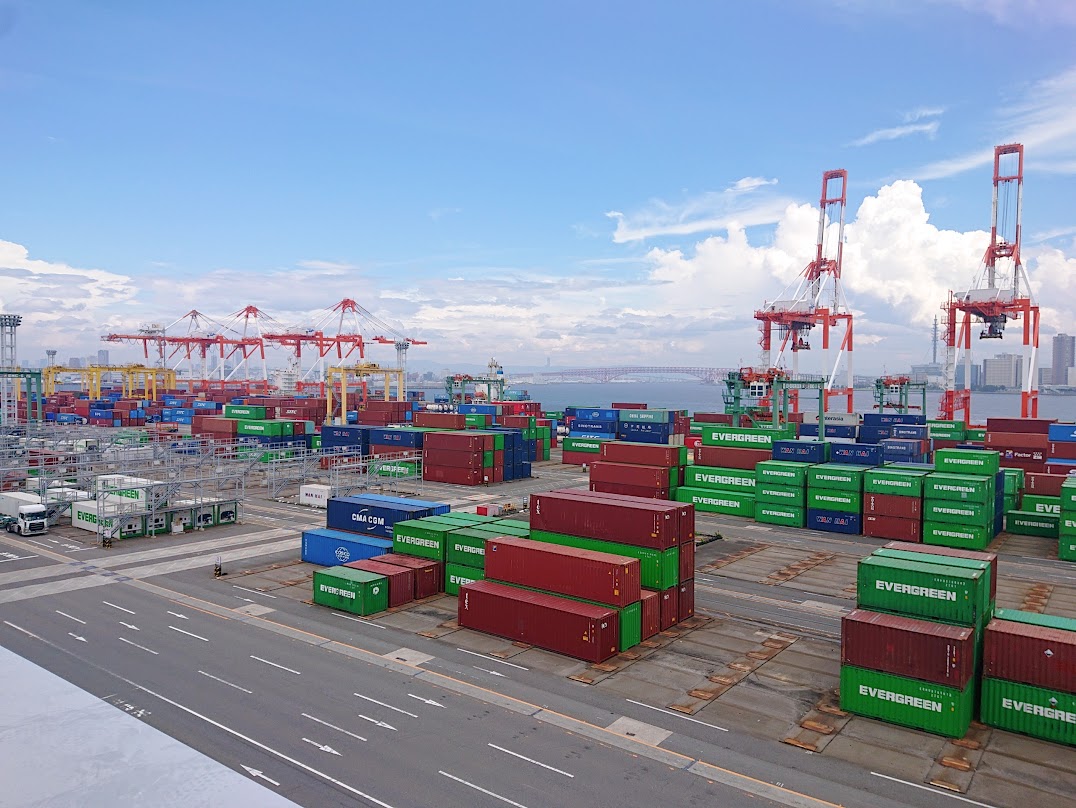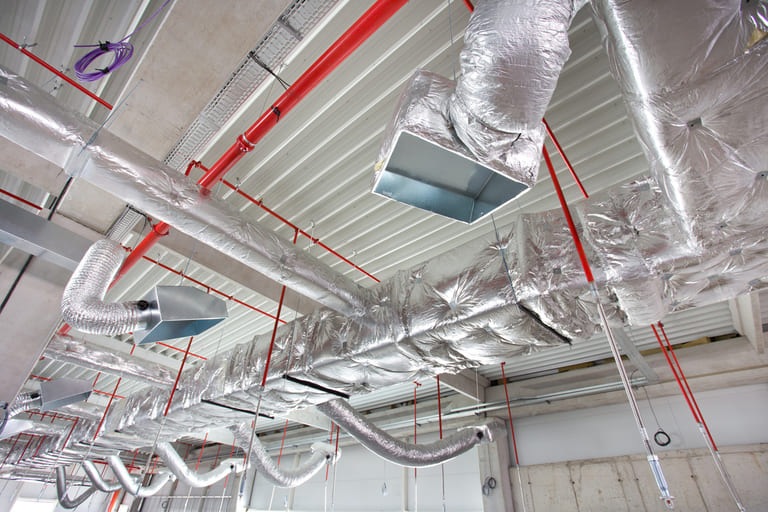

Taiyo Kogyo Column
Explanation of the procedures for introducing a WMS to a logistics site and how to select a system.

There is a widespread trend to introduce a “WMS” that can optimize operations at distribution terminals and other logistics sites to improve overall business efficiency and maximize profits.
Some of you may actually be considering implementing a WMS and are wondering what issues it should aim to solve and how to choose the right system.
This article provides an overview of WMS, how to choose one, and the goals you should aim for.
WMS is a system that can streamline logistics site operations

WMS (Warehouse Management System), also called “Warehouse Management System” in Japanese, is a system software for centralized management and optimization of warehouse logistics at the product movement level and worker work level.
By implementing a WMS, you can eliminate wasteful inventory management methods and personnel assignments in your warehouse to maximize efficiency.
WMS is actually being implemented at various logistics warehouses, and has brought about many results, such as cost reductions and improved business performance.
▼ Basic knowledge of WMS is also explained in detail in this article.
What is WMS (Warehouse Management System), the key to logistics efficiency?
Main features common to WMS

WMSs are offered by a variety of providers, with a wide variety of features in terms of details.
Below are some of the features that are mainstream and common to many of our products.
One system for all industries and sizes
One of the features of a WMS is that it has abundant functionality that can be customized for each business type and detailed on-site needs. For example, it provides a system that can be easily utilized in a variety of industries, regardless of size, such as a warehouse for storing raw materials in the manufacturing industry, a warehouse for parts and products, and a warehouse for goods in the service, wholesale, and mail order industries. The system is easy to use regardless of the size of the business.
Centralized management of multiple locations with one system
A WMS is not just for managing logistics within a single warehouse, but can also be used to centrally manage multiple warehouse locations scattered across the country, for example, with a single WMS.
Highly scalable service, can accommodate an increase in locations, etc.
In many cases, WMSs provided by service providers have usage plans (monthly fees) divided by scale of use, such as number of locations and number of management IDs, but the plans can be flexibly changed and optional contract contents can be modified to meet corporate needs.
Multilingual support can be introduced to overseas locations.
General WMSs support multiple languages, such as English and Chinese, as well as Japanese.
A WMS that supports multiple languages makes it possible to display and write on the management screen operated by the administrator, on the handheld terminal screen checked by warehouse workers, and on forms in the language that best suits the needs of the site.
Wireless handheld terminal for incoming/outgoing inspection
In warehouse operations under WMS operation, workers basically perform tasks such as product inspection while scanning each item with a handheld terminal in their hands.
This scanning provides real-time status coordination with the system.
Can be customized to meet the needs of shippers and customers
Many WMSs not only realize uniform warehouse operations, but also enable operations and instructions to operators for each situation by classifying conditions in detail, for example, A flow is applied to A type of cargo, and B flow is applied to irregular shipments to B type of customers.
How to choose the right WMS for your company

Nowadays, there are so many WMS providers that it is sometimes difficult to decide which service to choose when actually introducing a WMS.
Below are some of the key points to look for when selecting a service.
Choose from Cloud / On-premise / Packaged
There are three types of WMS offerings when they are provided by a business: “cloud-based,” “on-premise,” and “packaged.
Cloud computing” is becoming the mainstream in recent years, not only for WMS, but also for other systems and services that companies are implementing.
In cloud-based services, software runs in the cloud (on the Internet), and users access the software via an Internet connection to use its functions.
Both “on-premise” and “packaged” offerings have existed since the dawn of personal and business computers.
In the “on-premise type,” services are implemented using servers and infrastructure owned by the user company.
In the “package type,” services are provided on storage media such as DVD-ROMs, CD-ROMs, and, in the past, floppies, and users install the functions on their own computers using such media.
The “cloud-based” WMS that has become mainstream in recent years has many advantages: it can be accessed from anywhere with an Internet connection, detailed functional enhancements and option changes can be easily made only through Internet procedures, and maintenance of the infrastructure and service parts can be left to the service provider. The maintenance of the infrastructure and service part can be left to the service provider.
On the other hand, since cloud-based services run on a public network, on-premise and packaged services are still often the choice from a security perspective or if you want to keep all maintenance privileges in-house.
Confirm compatibility with the company's industry and business type by referring to case studies, etc.
WMS may be provided by businesses that have long been involved in the development and operation of management system software and logistics business-related systems, or by new entrants.
However, it is important to choose a provider with a wealth of case studies and a proven track record that matches your company’s business content and needs.
If the service is provided by a business that is highly compatible with your industry or business type, you can expect not only the expected value in terms of the functionality of the system itself, but also, for example, consultation on individual situations prior to implementation and on-site support after operation.
Determine the scope of data sharing, such as multiple locations of your company or other related companies, and select a suitable system.
When implementing and operating a WMS, it is often necessary to share and deploy some of the WMS functions and information to multiple locations and related companies (suppliers, delivery companies, sales site operators, etc.), depending on the company’s needs.
Before implementing a WMS, it is important to consider the scope of data sharing from an operational standpoint, for example, whether it is possible to set up detailed access authorization for each ID, and whether the security is sufficient for access operations by external companies.
Choose a system with full security measures.
As mentioned above, regardless of whether the company is deploying to multiple locations or other companies, security measures are the most important aspect of the system, as it handles important business and customer information. In the unlikely event of an information leakage due to inadequate security or system vulnerabilities, it could lead to a serious situation that could affect the survival of the company’s business.
Check the website of the service provider in advance to confirm the details of its security measures and its compliance with the security standards established by each organization. It is important that security measures are not limited to external attacks, but also include information leaks due to human error on the part of internal employees.
Choose a business with a good support system.
WMSs often include a large number of features to accommodate a wide variety of industries and operational formats.
Especially when introducing a WMS for the first time, there may be many cases where the functions are not fully handled, and there may be uncertainty as to whether or not the current operation method is really optimized, or where questions arise regarding detailed aspects of the system.
In such cases, you can rest assured that the business will provide detailed support at the time and by the means of your choice as much as possible, such as telephone support, e-mail support or chat support.
What to aim for when implementing a WMS

However, if a WMS is introduced without clarifying its purpose, it may lead to ambiguous operations, such as rough use of functions as they exist, which in turn may lead to complicated operations, antagonism within the warehouse, and other detrimental effects.
Before considering specific system selection, it is a good idea to first envision the results your company should aim for.
Below are some examples of things that are the purpose of implementing a WMS.
Reduce human error in distribution centers and warehouses
Because warehouse work often involves repeating monotonous tasks in an environment that feels monotonous, it tends to be prone to human error due to distractions, especially when workers become accustomed to the work.
The WMS includes many features that reduce human error and facilitate follow-up in the event of an error, such as reliable business operations using hand scanners and automatic detection of irregular situations.
Streamlining, homogenizing, and standardizing operations
WMS is a system that centrally manages the real-time fluctuating movement of goods in and out of the warehouse, as well as the movement of workers, to provide appropriate instructions.
Since shipping history and inventory count corrections are also recorded automatically, areas previously left to the discretion of individual warehouse workers are standardized and standardized, improving the overall efficiency of warehouse operations.
Once the operation of the WMS is firmly established, many areas that were previously handled manually can be automated, leading to a reduction in human costs.
In addition, even new employees can expect to reduce personnel training costs because they can receive appropriate instructions from the system and perform their tasks correctly and efficiently.
Visualize your company's logistics situation in real time
The WMS visualizes in real time all the detailed movement and processing status (status) of goods in the warehouse, making it easy to check and track the status on the management screen.
Facilitates location management in warehouses and saves space
As in the logistics situation described above, the WMS can manage the location status in real time, for example, how many units of product A are stored on which floor and shelf in the warehouse, and what product worker B is currently picking and holding in his hand.
The system also allows centralized visualization of location usage throughout the warehouse, making it useful for making decisions on environmental improvements, such as integrating underutilized and wasted space and saving space.
After introduction, ultimately lead to cost savings.
In the initial phase of WMS implementation, human resource costs may be higher than expected due to the need for internal operational training and correction of unforeseen operational deficiencies.
However, once the functions of the WMS are understood and optimal operation in the warehouse becomes firmly established, we can expect multifaceted cost reductions by reducing a lot of waste and errors, freeing up human resources, and optimizing the business environment, as we have introduced here.
WMS implementation procedures

Here, we will briefly introduce the steps involved in the actual implementation of a WMS at the user company side, as a procedure common to many general WMS.
When you select a specific service provider or service, please be sure to check the official website of that service for the installation procedure and necessary preparations.
Identify the current issues and objectives of the company's logistics site
The first step is to understand the operational status in your warehouse, identify issues and objectives, and consider what should be achieved with the WMS and what functions should be prioritized and required.
Narrow down system candidates
Narrow down the candidate systems and services according to the issues and objectives you have identified.
Consult with system providers and confirm compatibility with your company.
Many WMS service providers offer free of charge to request information materials and consultation with a representative prior to implementation. Be sure to check the degree of match with your company’s needs in detail.
Trial the system
Some WMS services offer free use of the service for a predetermined period of time, such as a few weeks or a month.
In either case, we recommend that you try it out in a small environment as a trial run.
In addition to functionality, it is also important to check that the interface is easy to understand so that all workers in the warehouse can easily understand, operate, and check the system without difficulty.
Prepare for internal implementation.
Once the specific services have been selected and the pre-introduction stage has been reached, preparations are made for the introduction of the system, including prior in-house notification, deployment of personnel required for system operation training, and preparation of the warehouse environment for the system operation.
Implementing the System
The system is actually implemented.
Cases of failed WMS implementation

The following are examples of cases where a WMS has been implemented but fails to operate properly.
We urge you to consider these points when making the pre-introduction preparations described in the previous section.
- Mismatch between locations changed in the WMS and work needs in the field occurs.
- Confusion arises in the early stages of implementation due to differences in business content between sites with and without a WMS in place.
- Lack of prior sharing and coordination with the company’s IT and accounting departments and external business partners reduces operational efficiency.
WMS utilized in various industries

While this article focuses on the benefits of WMSs in logistics warehouses, WMSs are widely used in a variety of industries.
For example, in the retail industry, where there are multiple sales channels, such as e-commerce sites handling the company’s own products and stores of various sizes scattered across the country, there are many cases where inventory is centrally managed by a WMS, which is used to monitor utilization rates and optimize inventory distribution.
In the food industry, there are examples of companies using WMS for the most important aspect of quality control, and thoroughly managing lot information and expiration dates through the system to ensure safety and quality.
WMS is also used in a variety of other fields, such as tracking batch information and serial numbers of pharmaceuticals in the pharmaceutical industry, and integrating and sharing inventory and production lines for optimization in the manufacturing industry, contributing to business optimization and product quality improvement.
Taiyo Kogyo's "Tent Warehouse" Proposal to Help Improve and Optimize the Operation of Logistics Sites

As we have described so far, the introduction of a WMS and its optimal operation can be expected to improve and optimize the productivity of logistics operations.
In these efforts, there may be a need to relocate or expand some warehouse facilities at short notice, for example, in order to optimize warehouse operations and facilities as they are reviewed.
In such cases, please consider utilizing “tent warehouses”.
Compared to conventional or prefabricated warehouses, tent warehouses can significantly reduce costs and construction time, and are a construction method that can be easily utilized immediately for immediate needs.
Taiyo Kogyo offers a wide variety of products that can be used at logistics sites, including tent warehouses and other system buildings that also have short construction periods.
Click here for a list of Taiyo Kogyo Corporation’s products and services, or click here to request information materials.
https://www.tentsouko.com/
Visualization" and "operational efficiency" of logistics with WMS
WMS (Warehouse Management System) has a wide range of functions to meet various needs, and its appropriate introduction and operation can realize “visualization” of goods and people in the logistics field and “operational efficiency”.
Please use the prerequisite knowledge presented in this article to make the best WMS selection.
Tent Warehouseへの
Contact us

What you need to know when building a warehouse
We packed it all in.
Clues to solving the 2024 problem
Recommended for
I don't know where to start in building a warehouse.
I want to build a warehouse in an economical way.
Which type of warehouse should we build?
I want to learn the basics of warehouse construction anyway.
I'm concerned about the 2024 problem, but I don't know what to do about it.
Related Articles
- TOP>
- Taiyo Kogyo Column>
- Explanation of the procedures for introducing a WMS to a logistics site and how to select a system.








